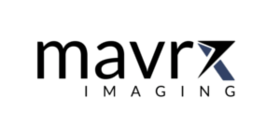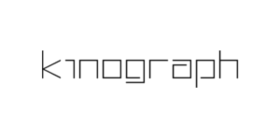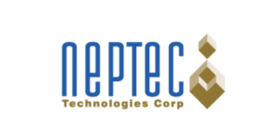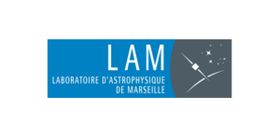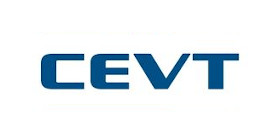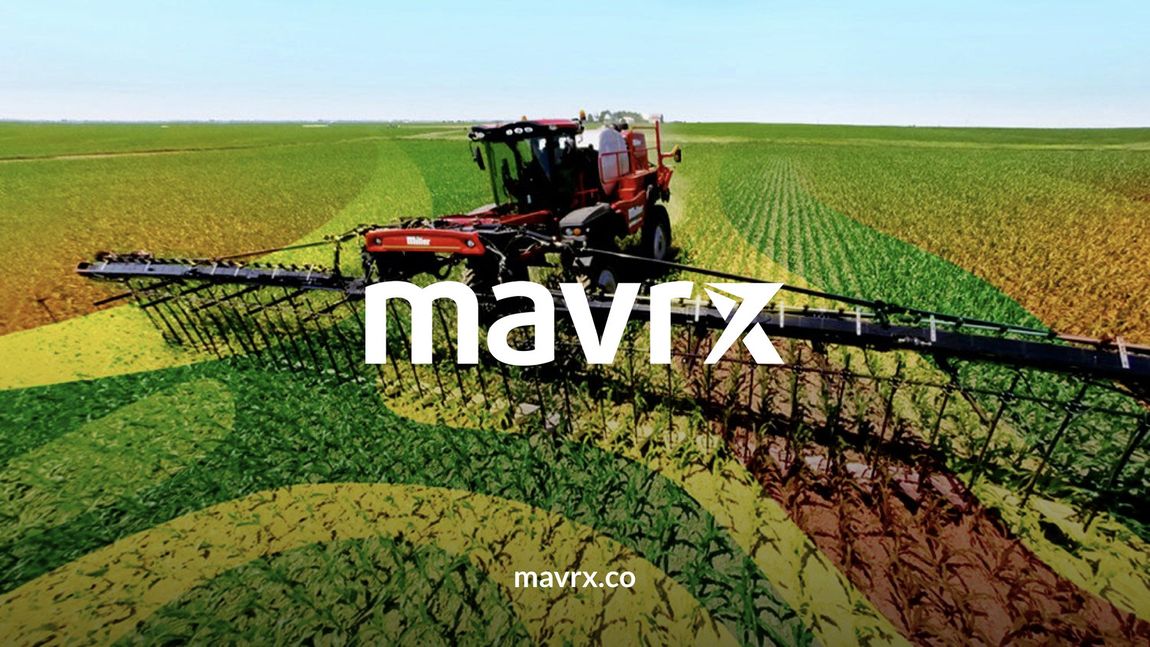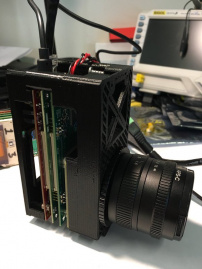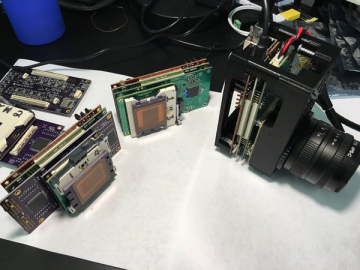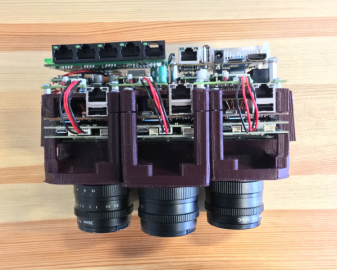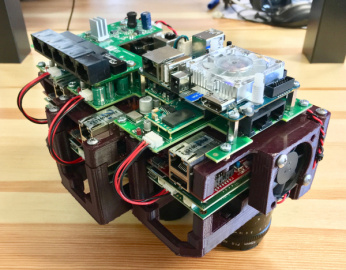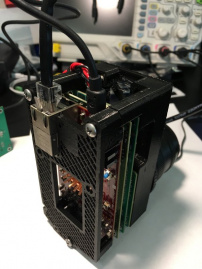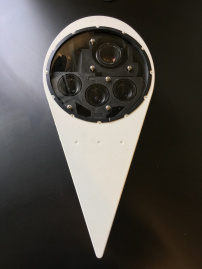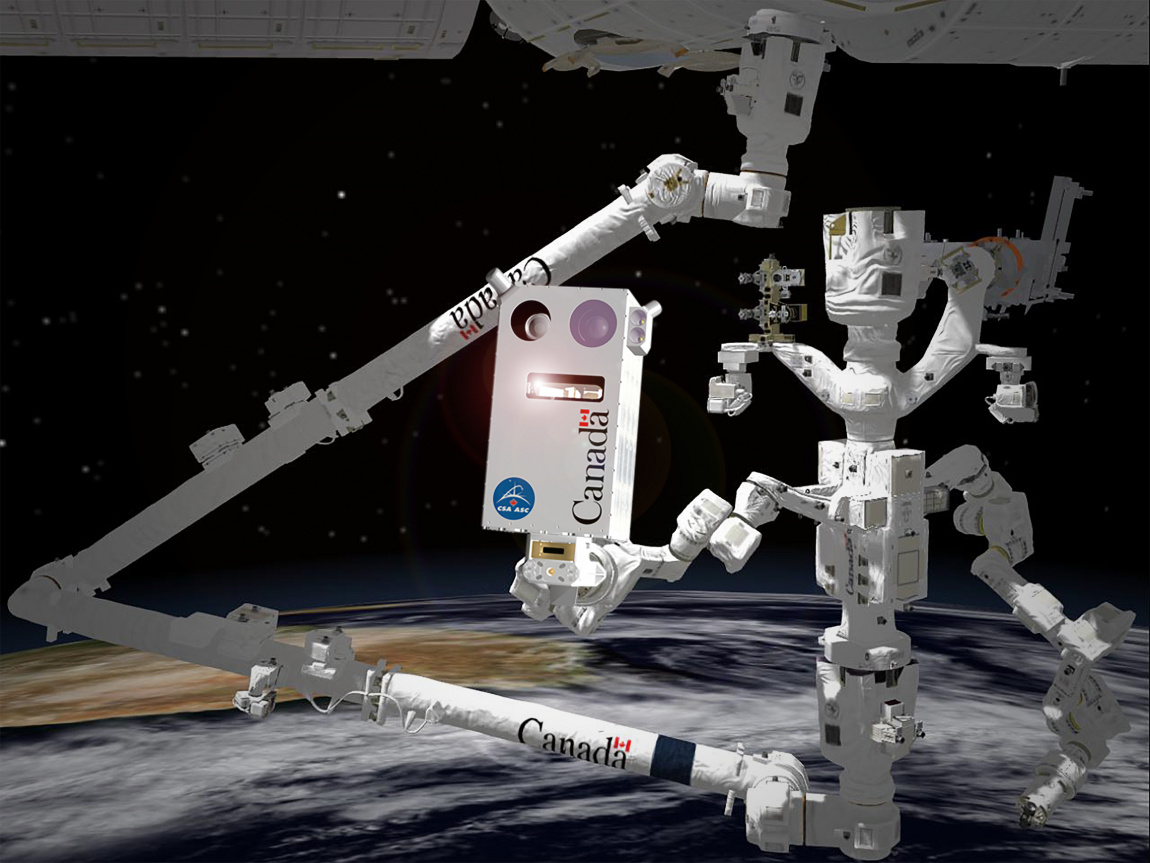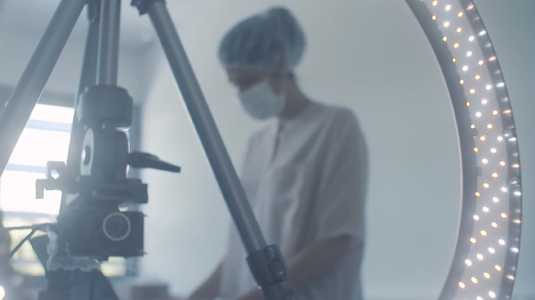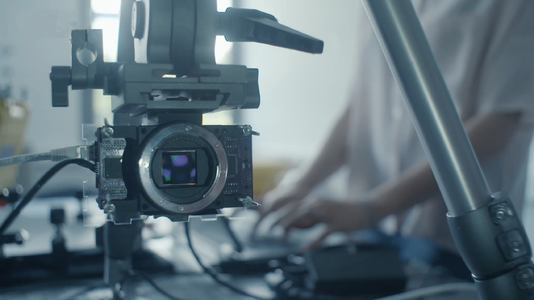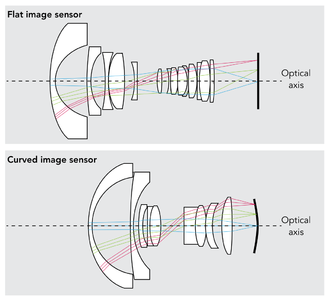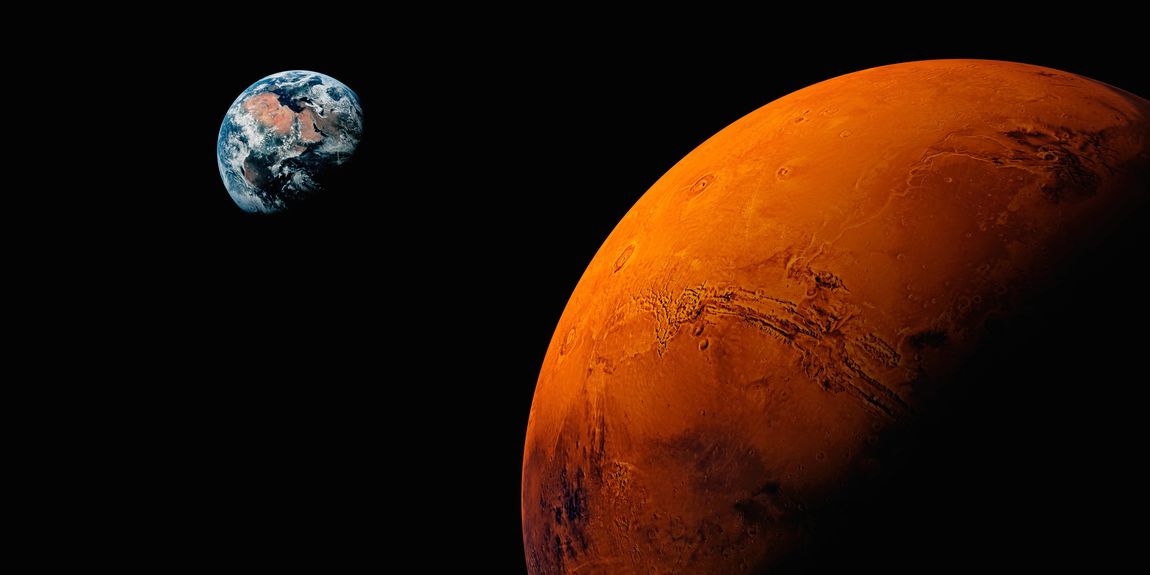Difference between revisions of "AXIOM Beta/Case Studies/Japan"
(Created page with "__NOTOC__ ==AXIOM Beta Developer Kit== apertus° の AXIOM Beta 開発者キットは、カメラのプリント基板へのアクセスが簡単なことから、ソフト...") |
|||
| Line 44: | Line 44: | ||
</gallery> | </gallery> | ||
「安全性の観点から、軽飛行機の翼に取り付ける事前認証済みのフライトポッドは厳しく規制されています。わたしたちの目的(空中マッピング)には、よく見る様なカメラは使用不可能なのですが、AXIOM Beta の柔軟性のおかげで、PCB部分の再構成してカメラ3台分の力を生かすことができ、それによって個々の帯域のスペクトルデータをフィルタリングしてカスタム設計されたソフトウェアシステムに渡すことができました。」( Anthony May 氏、Mavrx社 ) | |||
ご参考: | |||
* [http://www.mavrx.co Mavrx website] | * [http://www.mavrx.co Mavrx website] | ||
* [https://github.com/apertus-open-source-cinema/axiom-beta-firmware/tree/fullstack Mavrx GitHub] | * [https://github.com/apertus-open-source-cinema/axiom-beta-firmware/tree/fullstack Mavrx GitHub] | ||
* Anthony May | * フライトポッドがどのように構築されたかの一連を紹介する Anthony May 氏のプレゼンテーション [https://www.youtube.com/watch?v=fYUwzjs8lwo YouTube] | ||
---- | ---- | ||
| Line 58: | Line 58: | ||
===Neptec=== | ===Neptec=== | ||
Neptec Design Groupは、カナダ宇宙庁(CSA)から受注した契約の一環として、国際宇宙ステーション(ISS)のための最先端のビジョンシステムを開発します。この革新的なビジョンシステムは、3つのセンサーの組み合わせを使用してISSの外部を監視し、これにより宇宙実験室の内部の安全性と運用性が維持されます。この技術によって、宇宙ステーションのカナダ製のロボットの便利屋 [http://www.asc-csa.gc.ca/eng/iss/dextre/default.asp Dextre] は、宇宙ステーションの外観の損傷の兆候を迅速に検知できるようになり、宇宙飛行士の搭乗時の安全を保つことができます。 | |||
[[File:Neptec Arm Projection.jpg | 1150px | ...]] | [[File:Neptec Arm Projection.jpg | 1150px | ...]] | ||
「AXIOMカメラをケーススタディに使用しています。 このカメラは、当社のカスタムレンズの組み立てのテストと、初期のソフトウェア開発のリスクの軽減に役立ちます。また、Zynq ホストを使用して CMV12000 ベースのカメラを構築している一方で、わたしたち独自のカメラは低軌道宇宙環境で動作する必要があります。AXIOM Betaは、開発と初期テストに着手するのに非常に良いリファレンスモデルです。」( Len Melo 氏、Neptec社プログラムマネージャー ) | |||
AXIOMベータは2018年2月に Neptec に送られました。プロジェクトの進展の順に写真を紹介します。 | |||
ご参考: | |||
* [https://neptec.com/missions/new-eyes-for-iss/ New Eyes for ISS] | * [https://neptec.com/missions/new-eyes-for-iss/ New Eyes for ISS] | ||
| Line 79: | Line 78: | ||
===LAM=== | ===LAM=== | ||
[https://www.lam.fr/ Laboratoire d’Astrophysique de Marseille] | [https://www.lam.fr/ Laboratoire d’Astrophysique de Marseille] は Curve-One (史上初となる、20MPフルフレームの曲面型イメージセンサー)を開発しました。AXIOM Betaは、研究、開発、テストの中で一貫して使用されました。 | ||
| Line 85: | Line 84: | ||
曲面型センサーの光学的な利点は以下の通りです: | |||
* センサーのエッジにあるピクセルへの照射がより真っすぐ。 | |||
* 平面型センサーに特有の湾曲投影の補正が不要になるため、レンズがより軽くよりコンパクト。 | |||
* 180度の視野(100%の照射)。 | |||
* 1/3の光学系の削減(非球面レンズの不使用)。 | |||
* ズーム 2倍 の潜在能力。 | |||
曲面型センサは、平面型イメージングセンサ上に平面を射影するシンプルなレンズ系に付きまとう像面湾曲 ( [https://en.wikipedia.org/wiki/Petzval_field_curvature Petzval field curvature] としても知られる収差 ) を打ち消すように設計されています。像面湾曲は、光線の描く有効焦点距離が、光線がレンズの光軸から外れれば外れるほど小さくなるという事実に起因しています(無限遠からレンズの中心を通る線を光軸と定義しています)。 | |||
これはレンズメーカー側でフィールドフラットニング素子を用いて打ち消されていますが、必然的にレンズ設計を極めて複雑にしています。さらに大抵、これらの素子はその他の収差をもたらし、例えば、[https://en.wikipedia.org/wiki/Astigmatism astigmatism] と像面湾曲はレードオフします。 | |||
| Line 106: | Line 107: | ||
彼らの革新的な湾曲型の CMOS CMV12000センサーとそれを支える技術は、幅広い技術分野において、また特筆的に天文分野でのイメージキャプチャや光学部品(例えば可視イメージャー、マイクロディスプレイ、ボロメータ、IRディテクタなど)への応用が期待されています。 | |||
「より広範囲の視野、イメージ全体にわたる類を見ない光学特性の均一性、システムの高速化の獲得は、古典的な平面型の焦点面では不可能で、あたかも天文機器の新時代の幕開けです。必要な部品は減り、残りの部品も複雑さが軽減します。」( Thibault Behaghel 氏、リサーチエンジニア、マルセイユ大学天体物理学研究所) | |||
| Line 118: | Line 119: | ||
===CEVT=== | ===CEVT=== | ||
CEVT | CEVT は自動車をよりスマートに製造する方法を見出すことにフォーカスした革新的なイノベーションセンターです。そのコンパクトカー用のモジュール式車両アーキテクチャは、グローバルマーケットの最も厳しい要求を満たしており、CEVT が開拓した製造プロセスは広範囲の推進システムと多岐にわたる複雑さな技術を可能にしています。 | ||
Revision as of 20:07, 25 February 2021
1 AXIOM Beta Developer Kit
apertus° の AXIOM Beta 開発者キットは、カメラのプリント基板へのアクセスが簡単なことから、ソフトウェア/ハードウェア関連の開発に取り組みたい方の理想にぴったり合っています。関連するすべての設計ファイルや、回路図、ボードレイアウト、BOM、STEPファイル、ソフトウェアのソースコードのレポジトリ等々は、無料で利用できます( AXIOM Beta のメインページを参照ください)。
データをオンボードで処理できることと、カメラを他のデバイスとシームレスに統合できることで、既存のプロプライエタリのカメラと比較したときに、非常に大きな自由度がもたらされます。カメラは Arch Linux で動作するため、カスタムソフトの作成と統合は極めて単純です。これにより技術分野の先駆的な複数の組織で AXIOM Beta が利用されており、高品質のビデオデータの取得は維持しつつ、既存のハードウェア設計に沿ってカメラを再構成する余地が生まれています。
下記は、AXIOM Beta を自分たちのニーズに適用させたカメラユーザからのケーススタディーの事例の一部をリストにしたものです。
注:もし科学/研究の目的で、 AXIOM Beta 開発者キットのカスタム版が必要なときは、必要な変更を加えられるかもしれません。どうぞe コンタクトいただき 、要件を打ち合わせください。
1.1 Mavrx
アメリカに拠点を置く Mavrx 社は、精密農業業界のリーディングプロバイダーで、農作物の健康状態に関する実用的な指標や通知を農家に提供しています。マルチスペクトルの画像が、北米大陸飛ばされた小型航空機を介して収集されます。この画像は、植物の健康状態、窒素含有量、害虫や雑草の大量発生をピンポイントで測定し、農家が対策をとるために大切な日数/週数を提供します。
Mavrx社では、イメージセンサーを90度回転し、PCBスタックの端にシフトさせた後、さらに PCB の1枚を取り外すことで、AXIOM Beta のハードウェア設計を適応させました。この構成によって、3台のAXIOMベータ、デジタル一眼レフカメラ、制御および画像保存用コンピュータを、次世代のマルチスペクトル空中カメラシステムのプロトタイプに搭載することができました。
「安全性の観点から、軽飛行機の翼に取り付ける事前認証済みのフライトポッドは厳しく規制されています。わたしたちの目的(空中マッピング)には、よく見る様なカメラは使用不可能なのですが、AXIOM Beta の柔軟性のおかげで、PCB部分の再構成してカメラ3台分の力を生かすことができ、それによって個々の帯域のスペクトルデータをフィルタリングしてカスタム設計されたソフトウェアシステムに渡すことができました。」( Anthony May 氏、Mavrx社 )
ご参考:
- Mavrx website
- Mavrx GitHub
- フライトポッドがどのように構築されたかの一連を紹介する Anthony May 氏のプレゼンテーション YouTube
1.2 Neptec
Neptec Design Groupは、カナダ宇宙庁(CSA)から受注した契約の一環として、国際宇宙ステーション(ISS)のための最先端のビジョンシステムを開発します。この革新的なビジョンシステムは、3つのセンサーの組み合わせを使用してISSの外部を監視し、これにより宇宙実験室の内部の安全性と運用性が維持されます。この技術によって、宇宙ステーションのカナダ製のロボットの便利屋 Dextre は、宇宙ステーションの外観の損傷の兆候を迅速に検知できるようになり、宇宙飛行士の搭乗時の安全を保つことができます。
「AXIOMカメラをケーススタディに使用しています。 このカメラは、当社のカスタムレンズの組み立てのテストと、初期のソフトウェア開発のリスクの軽減に役立ちます。また、Zynq ホストを使用して CMV12000 ベースのカメラを構築している一方で、わたしたち独自のカメラは低軌道宇宙環境で動作する必要があります。AXIOM Betaは、開発と初期テストに着手するのに非常に良いリファレンスモデルです。」( Len Melo 氏、Neptec社プログラムマネージャー )
AXIOMベータは2018年2月に Neptec に送られました。プロジェクトの進展の順に写真を紹介します。
ご参考:
1.3 LAM
Laboratoire d’Astrophysique de Marseille は Curve-One (史上初となる、20MPフルフレームの曲面型イメージセンサー)を開発しました。AXIOM Betaは、研究、開発、テストの中で一貫して使用されました。
曲面型センサーの光学的な利点は以下の通りです:
- センサーのエッジにあるピクセルへの照射がより真っすぐ。
- 平面型センサーに特有の湾曲投影の補正が不要になるため、レンズがより軽くよりコンパクト。
- 180度の視野(100%の照射)。
- 1/3の光学系の削減(非球面レンズの不使用)。
- ズーム 2倍 の潜在能力。
曲面型センサは、平面型イメージングセンサ上に平面を射影するシンプルなレンズ系に付きまとう像面湾曲 ( Petzval field curvature としても知られる収差 ) を打ち消すように設計されています。像面湾曲は、光線の描く有効焦点距離が、光線がレンズの光軸から外れれば外れるほど小さくなるという事実に起因しています(無限遠からレンズの中心を通る線を光軸と定義しています)。
これはレンズメーカー側でフィールドフラットニング素子を用いて打ち消されていますが、必然的にレンズ設計を極めて複雑にしています。さらに大抵、これらの素子はその他の収差をもたらし、例えば、astigmatism と像面湾曲はレードオフします。
彼らの革新的な湾曲型の CMOS CMV12000センサーとそれを支える技術は、幅広い技術分野において、また特筆的に天文分野でのイメージキャプチャや光学部品(例えば可視イメージャー、マイクロディスプレイ、ボロメータ、IRディテクタなど)への応用が期待されています。
「より広範囲の視野、イメージ全体にわたる類を見ない光学特性の均一性、システムの高速化の獲得は、古典的な平面型の焦点面では不可能で、あたかも天文機器の新時代の幕開けです。必要な部品は減り、残りの部品も複雑さが軽減します。」( Thibault Behaghel 氏、リサーチエンジニア、マルセイユ大学天体物理学研究所)
See:
1.4 CEVT
CEVT は自動車をよりスマートに製造する方法を見出すことにフォーカスした革新的なイノベーションセンターです。そのコンパクトカー用のモジュール式車両アーキテクチャは、グローバルマーケットの最も厳しい要求を満たしており、CEVT が開拓した製造プロセスは広範囲の推進システムと多岐にわたる複雑さな技術を可能にしています。
AXIOM Beta is being used by CEVT's world-class, advanced engineering teams to develop on innovation object detection system projects.
"The apertus° camera is enabling our innovation team to experiment with offload processing to the camera as well as processing raw sensor data in real time. This camera provides us with greater diversity of information, resolution and sheer capture speed than other products at this price point. Being open source keeps our development up-to-date and open to changes at the speed we need to make them.
The first stage of our innovation project has to do with object tracking and training. We plan to move on to both indoors and outdoors use cases for an important area of our organisation and the automotive industry in general: safety and driver experience." - Victor Cepeda, CEVT.
See:
1.5 eXaminArt
PIXI (Planetary In-situ X-ray Imager) is a microCT instrument concept intended for deployment to Mars, cometary nuclei, or other planets/planetesimals. PIXI will provide in-situ 3D-reconstructions of rock fragments or rock cores, enabling the study of microstructures of potential biogenic origin.
The instrument is based on a cone-beam geometry with a simple architecture combining a microfocused X-ray tube, an X-ray image sensor and a core scanning stage. PIXI can also provide X-ray fluorescence (XRF) data of the surface of the sample.
Applications:
- Analysis of rock cores for robotic in-situ science missions for astrobiology or geoscience.
- On-board analysis of rock cores sealed in canisters for sample-return, including on a Mars fetch-rover to analyze cores collected by the Mars 2020 rover and help assess best candidates for return to Earth.
- On-board Space Station research instrument for the study of multiphase materials in microgravity.
"We're modifying AXIOM Beta into an X-ray camera for a small Computed Tomography (CT) instrument under NASA funding. This research is part of a larger project to develop a CT instrument which will analyze ice and rock samples on the surface of Mars. We'll be testing several types of scintillators - the film that transforms X-ray light into the visible light that can be detected by a CCD or CMOS sensor.
Axiom Beta is interesting for these tests because it gives easy access to the sensor and the firmware is open which would facilitate modification for our testing. If successful, the camera will go into a CT prototype, but the 1st objective is to have an R&D base for testing scintillators." - Philippe Sarrazin, SETI Institute.
See:
